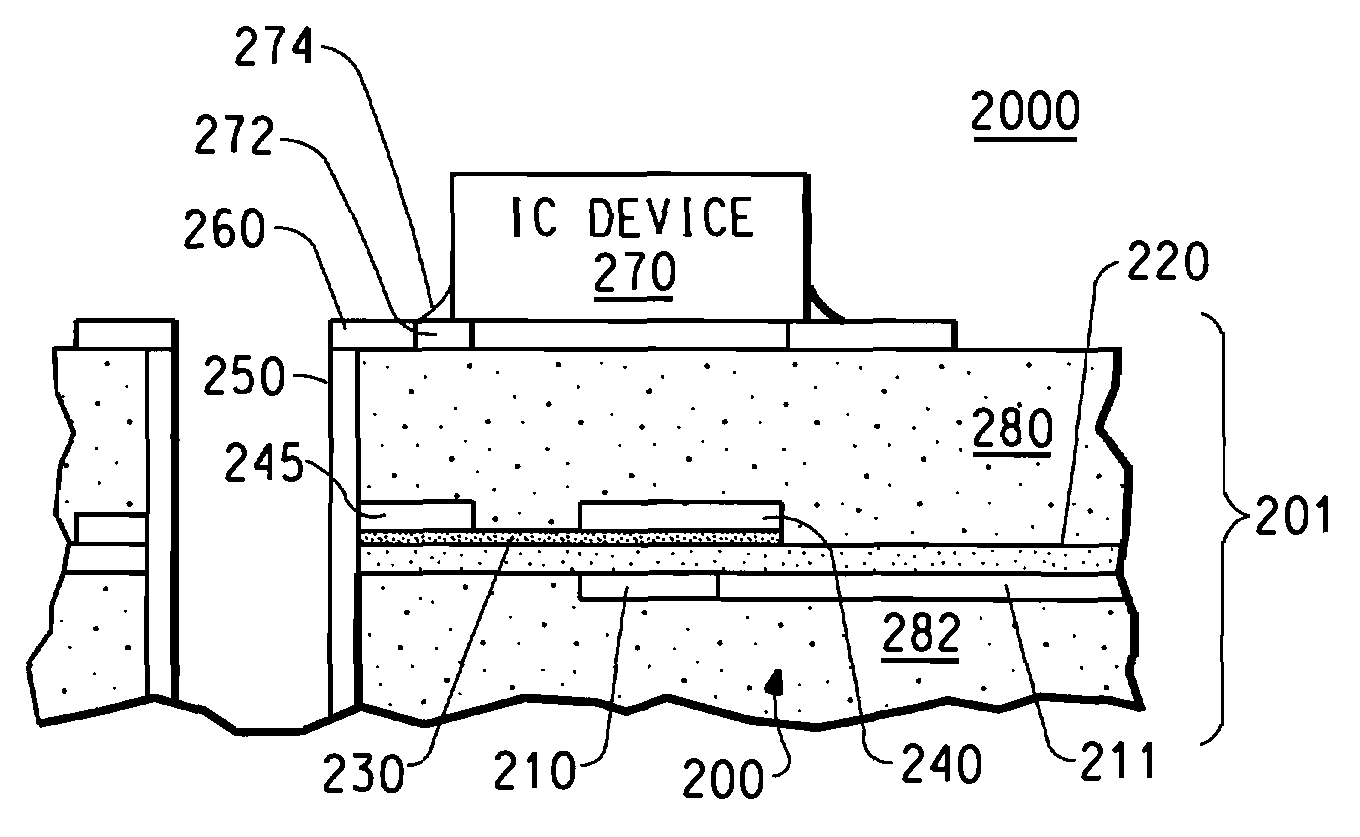Capacitive/resistive devices, organic dielectric laminates and printed wiring boards incorporating such devices, and methods of making thereof
a technology of resistors and capacitors, applied in the direction of printed circuit non-printed electrical components association, conductive pattern formation, electrical apparatus construction details, etc., can solve the problems of increasing fabrication costs and reliability reduction of solder joints, so as to reduce the cost and difficulty of creating resistors and capacitor functions, free up valuable real estate, and improve reliability
- Summary
- Abstract
- Description
- Claims
- Application Information
AI Technical Summary
Benefits of technology
Problems solved by technology
Method used
Image
Examples
example 1
[0024]This example of the device 200 is discussed with reference to FIG. 3. In this example, the initial laminate structure shown in FIG. 4B, consists of copper foil 242 plated with a resistive material 232 that is composed of a nickel phosphorus alloy of sheet resistivity 50 ohms per square. The dielectric 220 is a barium titanate-filled thermoplastic polyimide. Barium titanate is advantageous as a filler as it is readily available and lead-free. The dielectric 220 is 14 microns thick and has a dielectric constant of 11, thereby yielding a capacitance density of 4.5 nanoFarads per square inch.
[0025]The size (when viewed from a top plan perspective) of the capacitor needed for a transmission line termination of 30 picoFarad is 4.3 square mm, or approximately 2 mm by 2 mm. Electrodes 210 and 240 are formed from etching copper foils 212 and 242. The above capacitor is easy to make to relatively high tolerances.
[0026]The size of the resistor in this example for a nominal 60 ohm resista...
example 2
[0027]This example of the device 200 is discussed with reference to FIG. 3. In this example, the initial laminate structure shown in FIG. 4B, consists of copper foil 242 plated with a resistive material 232 that is composed of a nickel phosphorus alloy of sheet resistivity 50 ohms per square. The dielectric 220 is a barium titanate-filled thermoplastic polyimide. Barium titanate is advantageous as a filler as it is readily available and lead-free. The dielectric 220 is 8 microns thick and has a dielectric constant of 11, thereby yielding a capacitance density of 6.2 nanoFarads per square inch.
[0028]The size (when viewed from a top plan perspective) of the capacitor needed for a transmission line termination of 30 picoFarad is 3.1 square mm, or approximately 1.77 mm by 1.77 mm. Electrodes 210 and 240 are formed from etching copper foils 212 and 242. The above capacitor is easy to make to relatively high tolerances.
[0029]The size of the resistor in this example for a nominal 60 ohm re...
PUM
| Property | Measurement | Unit |
|---|---|---|
| thickness | aaaaa | aaaaa |
| dielectric constant | aaaaa | aaaaa |
| dielectric constant | aaaaa | aaaaa |
Abstract
Description
Claims
Application Information
 Login to View More
Login to View More - R&D
- Intellectual Property
- Life Sciences
- Materials
- Tech Scout
- Unparalleled Data Quality
- Higher Quality Content
- 60% Fewer Hallucinations
Browse by: Latest US Patents, China's latest patents, Technical Efficacy Thesaurus, Application Domain, Technology Topic, Popular Technical Reports.
© 2025 PatSnap. All rights reserved.Legal|Privacy policy|Modern Slavery Act Transparency Statement|Sitemap|About US| Contact US: help@patsnap.com



